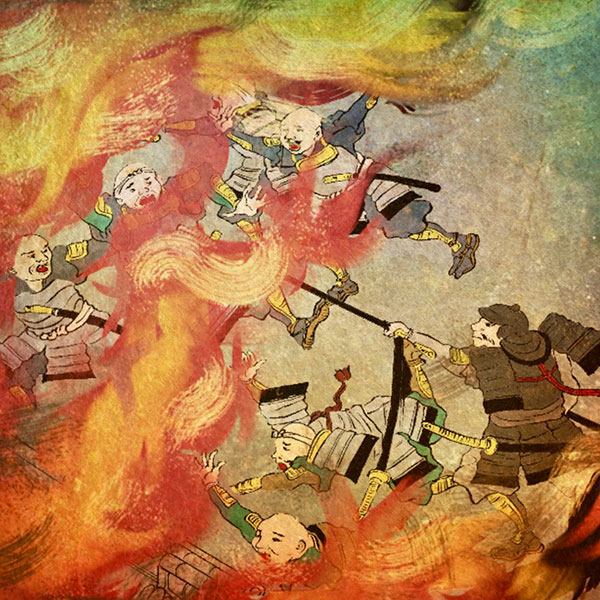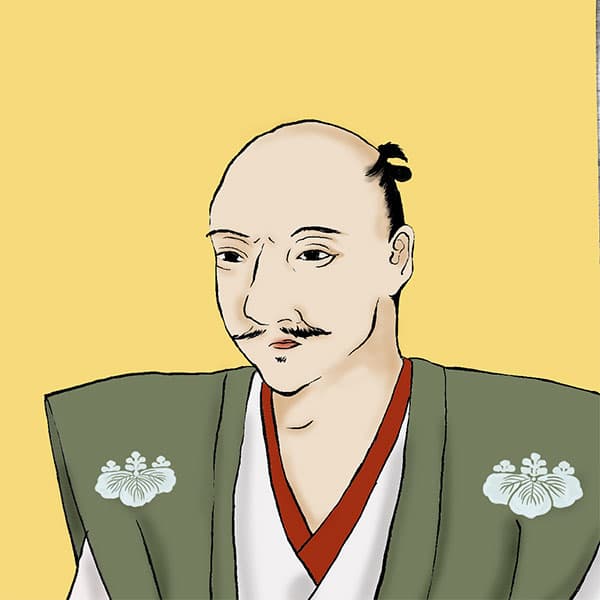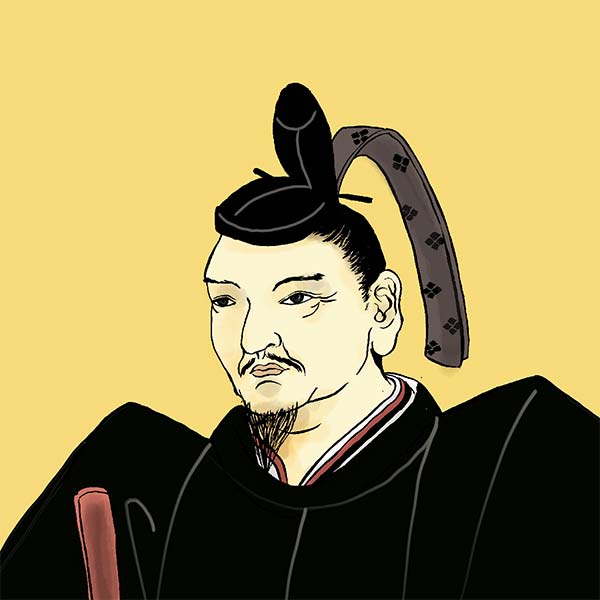Burning of Mt. Hiei (2/2)Nobunaga's "massacre" at Enryakuji Temple

Burning of Mt. Hiei
- Article category
- case file
- Incident name
- Burning of Mt. Hiei (1571)
- place
- Shiga Prefecture
- Related castles

Nijo Castle
- people involved
In August of the same year, Nobunaga marched into Kita-Omi and began attacking Asai. After capturing Kanamori Castle (Moriyama City, Shiga Prefecture), which was the base of the Omi Ikko Ikki, on September 3rd, on September 11th they set up camp near Onjoji Temple (Miidera, Otsu City, Shiga Prefecture) and began attacking Enryakuji Temple on Mt. Hiei. Get ready. Onjo-ji Temple is a Tendai sect temple like Enryaku-ji Temple on Mt. Hiei, but it was a base for monks who were in religious conflict with Enryaku-ji Temple on Mt. Hiei, and it was the site of many armed conflicts.
Enryaku-ji Temple was aware of Nobunaga's movements, so they sent gold to Nobunaga and begged him to stop attacking. However, Nobunaga refused. For this reason, the Enryaku-ji Temple prepared for the attack by assembling the monks and soldiers at the Konpon Chudo Hall at the top of the mountain.
Then, on September 12, Nobunaga ordered an all-out attack on Enryaku-ji Temple on Mt. Hiei. First, they set fire to Sakamoto (Otsu City, Shiga Prefecture) at the foot of Mt. Hiei. The situation at this time is described in "Nobunaga Koki", and the fire burned down Nemoto Chudo, Hiyoshi Taisha Shrine, Buddhist halls, shrines, monks' quarters, sutra storehouses, etc. without leaving a single building, and smoke rose like clouds. It is said that the mountain was reduced to ashes. According to historical documents from the time, the smoke could be seen from the town of Kyoto.
According to "Nobunaga Koki," the people fled up Mt. Hachioji and took refuge in the inner shrine of Hiyoshi Taisha Shrine, but Nobunaga's soldiers attacked and climbed up and "decapitated the monks, the children, the wise men, and the priests." is. It is also said that women and small children were captured and brought before Nobunaga. In any case, they simply cut off their heads, so there were thousands of corpses lying around, and it was impossible to see.
There is also a description in "Kototsugu Kyoki" written by Yotsugu Yamashina, a contemporary court noble, in which he says, "34,000 monks and laymen were cut off, men and women were arsoned, Katata etc. were set on fire, Buddhism was ruined, Buddhism should not be preached, and the royal law was not. "It should be done," he criticizes Nobunaga and expresses his anxiety.
Nobunaga's burning of Mt. Hiei ② Was it really a large scale attack?
The above is the interpretation of the burning of Mt. Hiei from the literature, but the theory that is currently considered to be most likely is that it was actually not as bad as this. As a result of excavations carried out several times in the late Showa period, it was found that the only buildings that were known to have been destroyed by fire were the Nemoto Chudo Hall and the Auditorium, and that many of the other buildings had disappeared before the fires. Furthermore, the excavations did not unearth the large amount of human bones that would have been found if there had been a massacre. For this reason, there is a theory that he may have actually burned down some of the temples and shrines and the town of Sakamoto.
According to Nobunaga Koki, the monks of Enryakuji Temple on Mt. Hiei at the time had a very bad reputation, and they invited women to the mountain, indulged in lust, ate meat, which was forbidden in Buddhism, and hoarded gold and silver treasures. The Tamonin Nikki written by the monks of Tamonin of Kofukuji Temple in Nara also shows that the temple complex of Enryakuji Temple on Mt. Hiei was in disrepair in the first year of Genki, and that most of the monks were living in Sakamoto, leading a disorderly life. .
In the first place, ``Nobunaga Koki'' was written after Nobunaga's death, and ``Kotetsugukyoki'' is also a written record of what he heard. In the end, the current situation is that we don't know much about the burning of Mt. Hiei, as it has already been destroyed.
Nobunaga's burning of Mt. Hiei ③ What was the reason for the burning?
Regarding the reasons why Oda Nobunaga burned down Mt. Hiei, the Nobunaga Koki describes his anger towards the monks who were breaking their precepts and acting as they pleased, and his ``frustrated anger'' at the fact that he had sided with the Azai and Asakura armies, which were his enemies.
Nobunaga himself seems to have had an unbiased stance on religion, protecting Christianity but not denying Shinto and Buddhism, but he did not tolerate those who opposed him. Moreover, Enryaku-ji Temple is a military base with monks and warriors, and is also a geographically important transportation hub that connects to Omi. To protect Kyoto, it is better to hold it down. It is believed that Mt. Hiei was burnt down for these complex reasons.
Enryakuji Temple on Mt. Hiei after the burning
After burning down Enryaku-ji Temple on Mt. Hiei, Oda Nobunaga left Mt. Hiei for Kyoto on September 13th, reported to the Shogun's Palace, and returned to Gifu on September 20th. After that, the temple and shrine territories of Enryaku-ji Temple and Hiyoshi Taisha Shrine were confiscated and distributed to five people: Mitsuhide Akechi, Nobumori Sakuma, Shigemasa Nakagawa, Katsuie Shibata, and Nagahide Niwa. In particular, Mitsuhide Akechi was entrusted with the control of Shiga District, Omi Province (including Otsu City, Shiga Prefecture), and built Sakamoto Castle as his residence. Judging from letters from the time, Mitsuhide appears to have been actively involved in the burning of Mt. Hiei.
After that, monks who had escaped often attempted to rebuild Enryakuji Temple on Mt. Hiei, but Nobunaga put a stop to it. In the end, permission for reconstruction was granted approximately 13 years after the burning of Mt. Hiei, during the era of Toyotomi Hideyoshi.
Reread the article about the burning of Mt. Hiei
- people involved

- WriterNaoko Kurimoto(Writer)I am a former travel industry magazine reporter. I have loved history, both Japanese and world history, since I was a child. I usually enjoy visiting temples and shrines, especially shrines, and often do ``pilgrimages to sacred places'' themed around historical figures. My favorite military commander is Ishida Mitsunari, my favorite castle is Kumamoto Castle, and my favorite castle ruins is Hagi Castle. My heart flutters when I see the ruins of battle castles and the stone walls of castle ruins.





